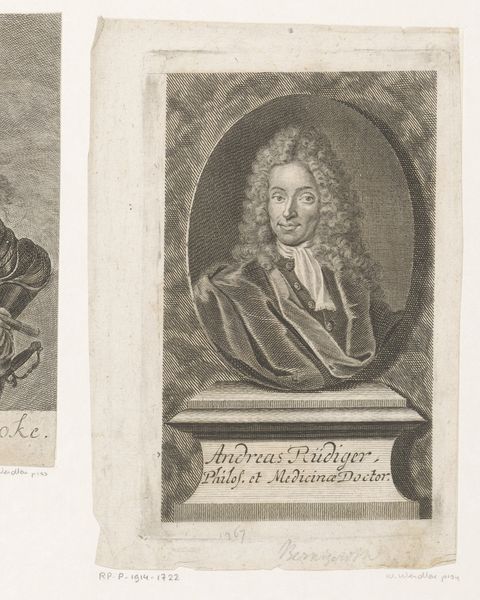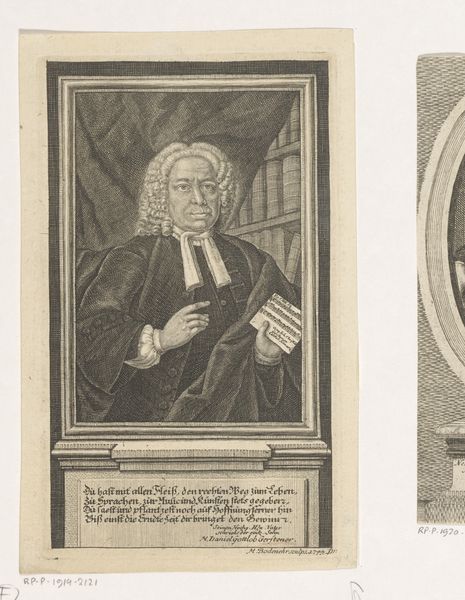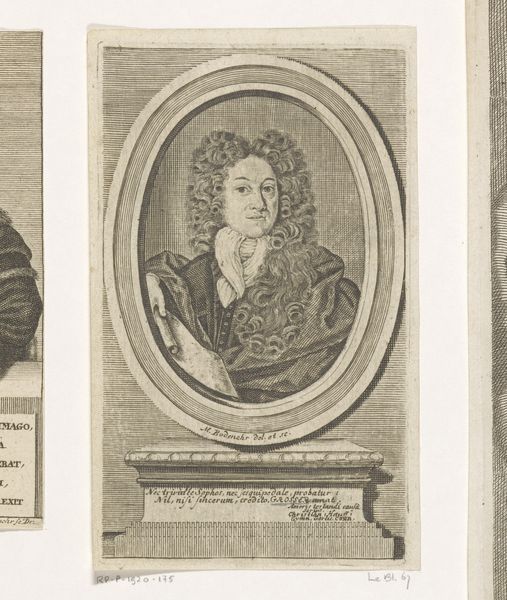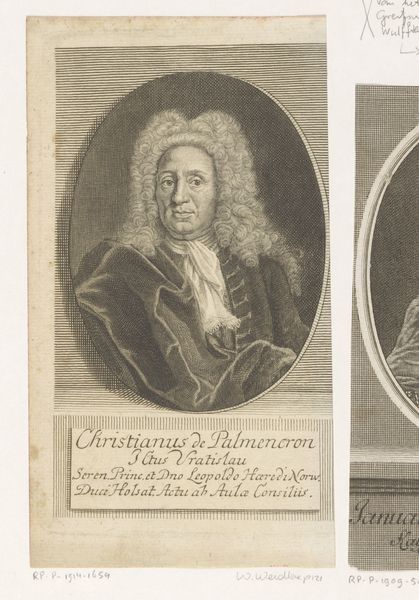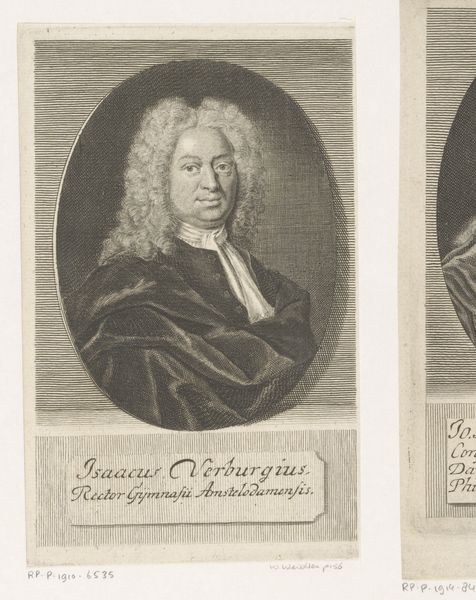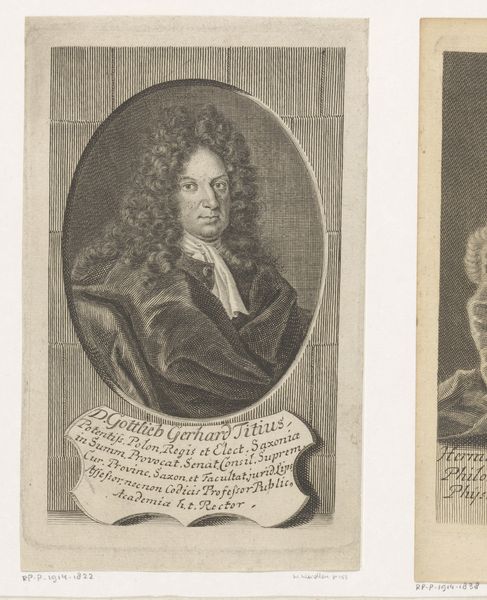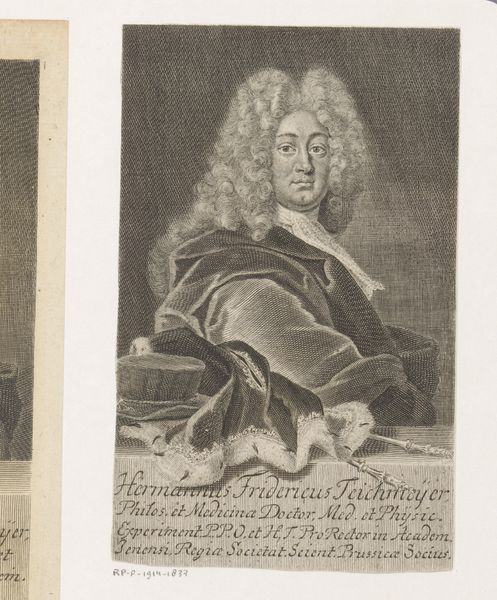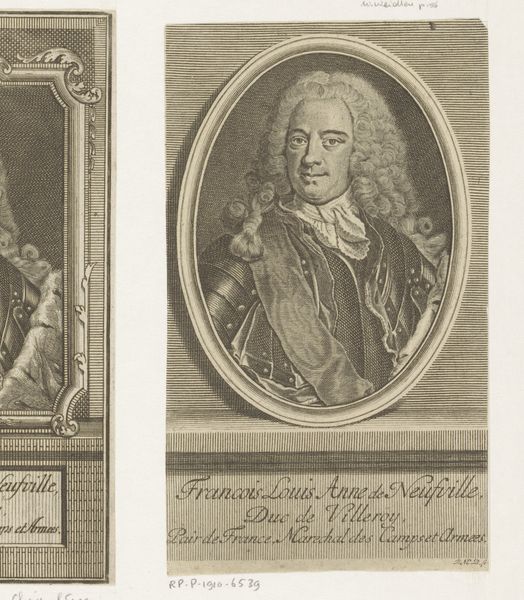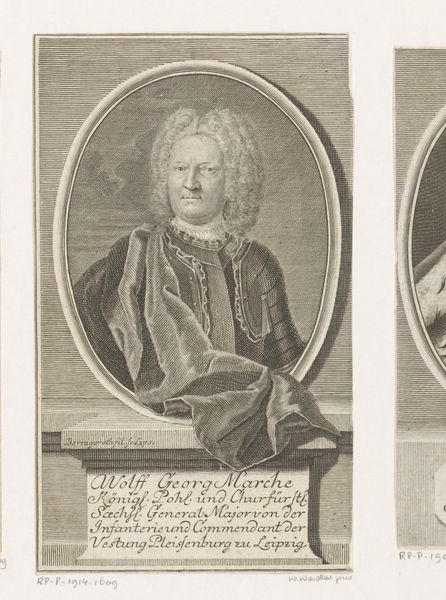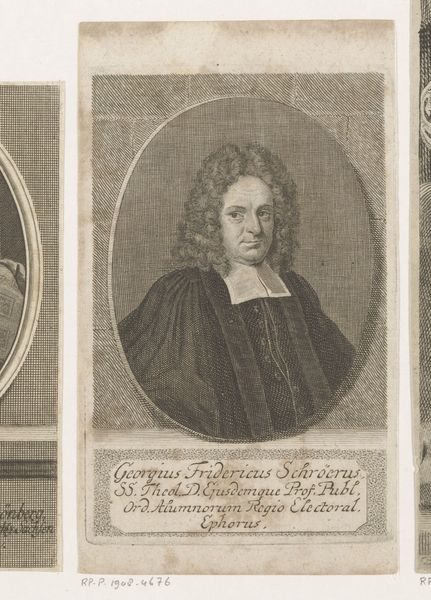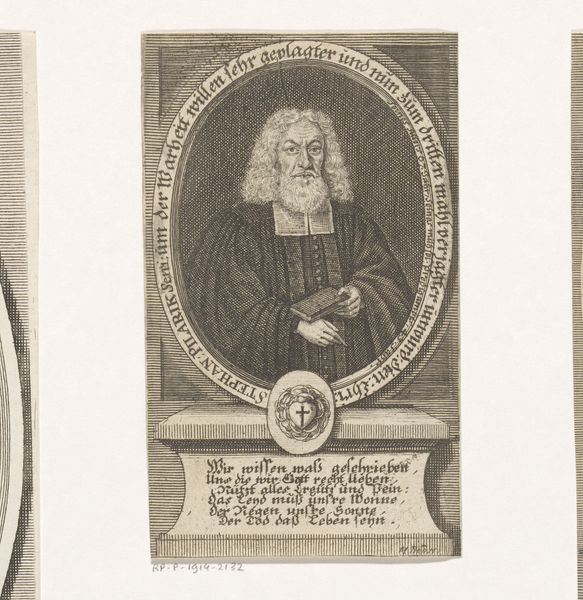
engraving
#
portrait
#
baroque
#
history-painting
#
engraving
Dimensions: height 145 mm, width 90 mm
Copyright: Rijks Museum: Open Domain
Curator: This is Johann Christoph Sysang’s "Portret van Christian Wolff," an engraving from 1746, held at the Rijksmuseum. Editor: It's fascinating how detailed it is for an engraving, capturing the texture of the fabric and Wolff’s wig. What can you tell me about the significance of portraying him this way? Curator: It's crucial to remember that portraiture, particularly in the Baroque period, was a tool for constructing and disseminating power and status. Wolff was an important philosopher, but also controversial. How might this portrait function in the context of the Enlightenment, and what ideological battles might be reflected here? Consider the context in which the figure of Wolff was fashionable, a time of significant philosophical clashes in Europe. Editor: So, beyond just documenting his appearance, the artist might be trying to say something about Wolff’s place in the intellectual world of the time? It almost seems like an endorsement. Curator: Precisely. Look at the way he holds the book, the implied wealth in his garments. He is portrayed as a man of learning and influence. Think about the power dynamics at play: who commissions such a portrait? What statement is being made by both the subject and the commissioner? Editor: I see what you mean. The choice of details really shapes the narrative. It encourages the public to align with him by establishing that authority. Curator: Exactly. Considering these subtle messages challenges the traditional idea of portraiture simply documenting appearances. Editor: That’s given me a whole new perspective on how to look at portraits. Thanks so much. Curator: My pleasure. Remember to always look for the narratives that art constructs and sustains.
Comments
No comments
Be the first to comment and join the conversation on the ultimate creative platform.
